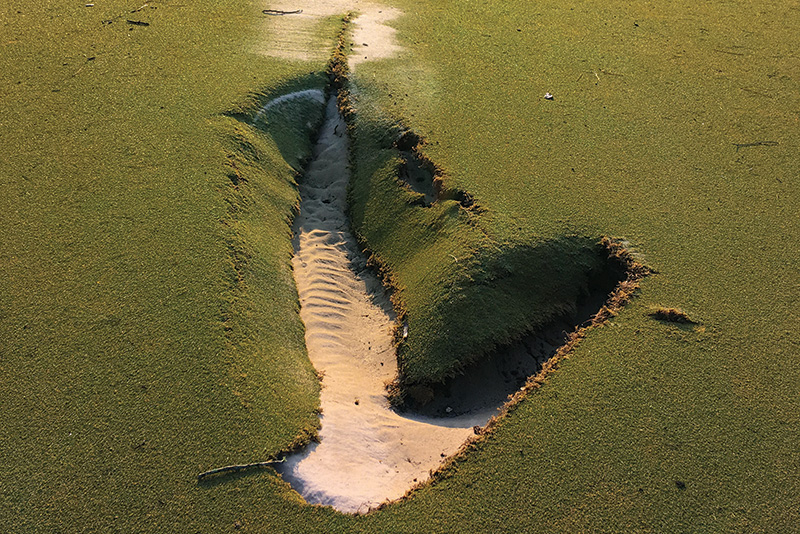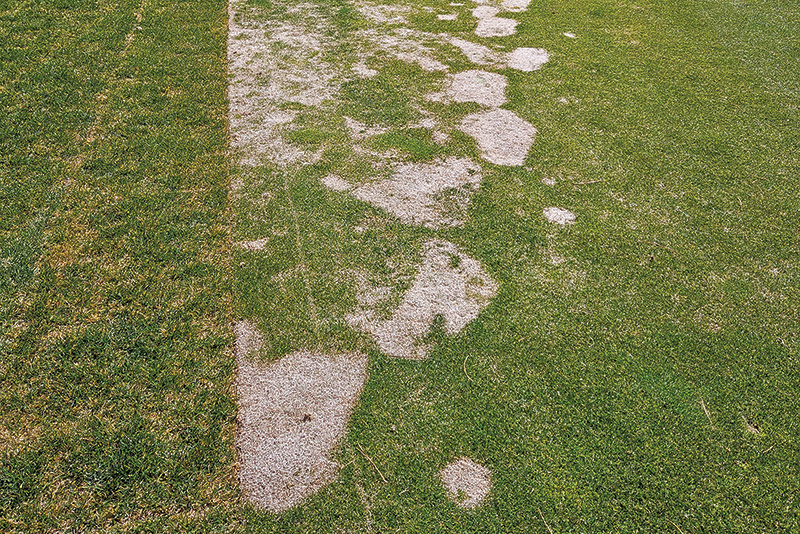Problem A: Hole in green with strange marks in hole and on turf

Location: Southeast Texas
Turfgrass area: Putting green
Turfgrass variety: Bermudagrass
Problem B: Marks on fairway after the first full thaw

Location: Fairway
Turfgrass area: Colorado Springs, Colo.
Turfgrass variety: Perennial ryegrass
Scroll down for answers.

Problem A: Hole in green with strange marks in hole and on turf
This golf course is located just off a major lake in southeastern Texas. Back in August 2017, a hurricane hit this area, and the weather system slowly meandered over eastern Texas and adjacent waters, causing unprecedented flooding. In a four-day period, many areas received more than 40 inches of rain. The lake and river on this course overflowed their banks and flooded much of the course. Many of the surrounding homes were unreachable by flooded roads, so rescue boats were used to evacuate residents. One rescue boat cruised over this green while the green was underwater, and the boat propeller hit bottom, which was the elevated green. The strange marks on the green’s surface are cut marks caused by the boat’s propeller. The hole in the green was caused by the boat revving up the motor, which caused the sand in the green to become washed away, leaving a hole and an area of propeller damage.
Photograph submitted anonymously.

Problem B: Marks on fairway after the first full thaw
If you look closely at the marks on this fairway after the first full snow thaw, you can see a pattern of a large-footed beast. In a major early season snowstorm in November 2024, this course received 25 inches of snow. It was too much to resist for some members and residents, and they used the golf course as a winter playground. The marks are snowshoe tracks, and you can even see where the ski poles landed as well. The snowshoes and pole tips compact the snow under their pressure. As the long winter turns to spring, this course, located at an elevation of 7,600 feet, experiences its spring freeze/thaw cycles in March and April. This causes melting ice to form under the compacted snow. Prolonged ice cover on perennial ryegrass eventually smothers the plants, and the result is what you see here as the snow melts and recedes. The staff treats these areas similar to repairs done to treat elk urine dead spots. The crew also has to deal with it at the beginning of spring by scarifying the damaged areas and putting down a seed-and-compost blend that germinates as the temps warm into summer.
Photograph submitted by Dan Hawkins, CGCS, director of agronomy & facility operations at Flying Horse Resort & Club in Colorado Springs, Colo., and 30-year GCSAA member.
Editor’s note: Have a photo of an on-course anomaly? GCM would love to have a look! Email it to Photo Quiz author John Mascaro.
John Mascaro is the president of Turf-Tec International.